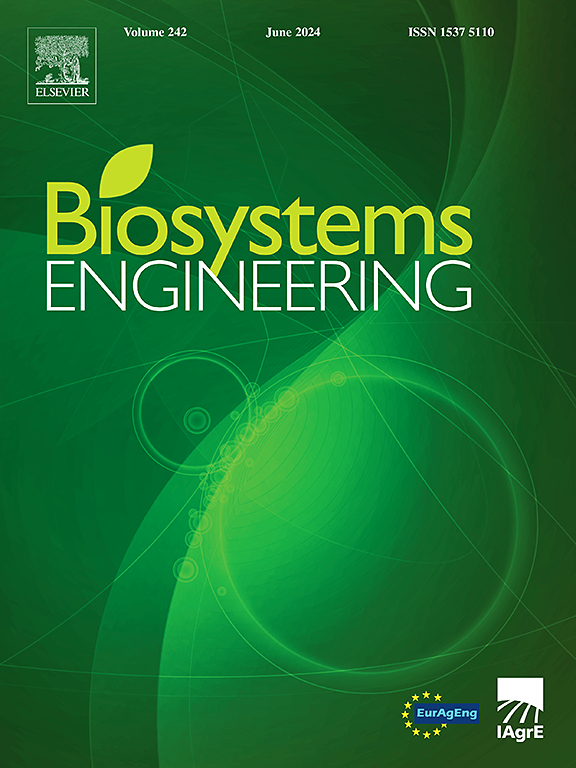一种基于高速气体射流的水稻非接触式行内除草装置的设计与试验
IF 5.3
1区 农林科学
Q1 AGRICULTURAL ENGINEERING
引用次数: 0
摘要
行内除草是促进水稻绿色生产、提高产量的重要手段。但传统除草装置存在除草率低、害苗率高的问题。本研究旨在设计并优化一种利用高速气体射流的非接触式行内除草装置,以提高除草效果,减少对幼苗的伤害。将气体喷射动力学与泥浆的非牛顿特性结合起来,进行了全面的研究。理论分析确定了声波气体射流的必要条件,并推导出气流是否能扰动泥浆的判据。通过理论分析和实际试验,探索影响射流穿透长度的因素和最佳射流参数。采用三因素五水平二次旋转正交试验,以喷嘴距苗距离、前后喷嘴距离和机器前进速度为试验因素,以除草率和苗损率为响应变量。参数优化后,除草率为88.07%,害苗率为1.71%,满足水田除草的农艺技术要求。最佳参数为喷嘴到苗的距离为0.110 m,前后喷嘴距离为0.080 m,机器前进速度为0.25 m s−1。结果表明,非接触式除草装置在保持较高除草率的同时,伤苗率低。本研究提出了一种创新的解决方案,解决了传统机械除草的局限性,有助于水稻株系间机械除草技术的创新,从而促进其绿色生产。本文章由计算机程序翻译,如有差异,请以英文原文为准。
A non-contact intra-row weeding device for rice based on high-speed gas jet: Design and experiment
Mechanical intra-row weeding is essential for promoting green production of rice and enhancing yield. However, conventional weeding devices are hindered by low weeding rate and high seedling damage rate. This study aimed to design and optimise a non-contact intra-row weeding device utilising high-speed gas jet to improve weed control and reduce seedling damage. A comprehensive investigation was conducted, integrating gas jet dynamics with the non-Newtonian properties of mud. Theoretical analyses determined the necessary conditions for sonic gas jets and derived a criterion for determining whether the airflow can disturb the mud. Factors influencing jet penetration length and optimal jet parameters were explored through theoretical analysis and practical experiments. A three-factor, five-level quadratic rotated orthogonal experiment was conducted, using nozzle-to-seedling distance, front-to-rear nozzle distance, and machine forward speed as experimental factors, and weeding rate and seedling damage rate as the response variables. Parameter optimisation achieved a weeding rate of 88.07 % and a seedling damage rate of 1.71 %, satisfying agronomic and technological requirements for paddy field weeding. The optimal parameters were a nozzle-to-seedling distance of 0.110 m, a front-to-rear nozzle distance of 0.080 m, and a machine forward speed of 0.25 m s−1. The results demonstrated that the non-contact weeding device had a low seedling damage rate while maintaining a high weeding rate. This study presents an innovative solution to address the limitations of traditional mechanical weeding, which contributes to the innovation of mechanical inter-plant weed control technology in rice and thus promotes its green production.
求助全文
通过发布文献求助,成功后即可免费获取论文全文。
去求助
来源期刊

Biosystems Engineering
农林科学-农业工程
CiteScore
10.60
自引率
7.80%
发文量
239
审稿时长
53 days
期刊介绍:
Biosystems Engineering publishes research in engineering and the physical sciences that represent advances in understanding or modelling of the performance of biological systems for sustainable developments in land use and the environment, agriculture and amenity, bioproduction processes and the food chain. The subject matter of the journal reflects the wide range and interdisciplinary nature of research in engineering for biological systems.
 求助内容:
求助内容: 应助结果提醒方式:
应助结果提醒方式:


